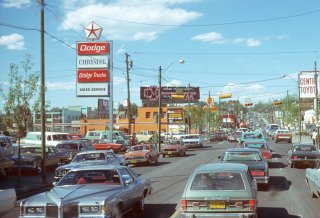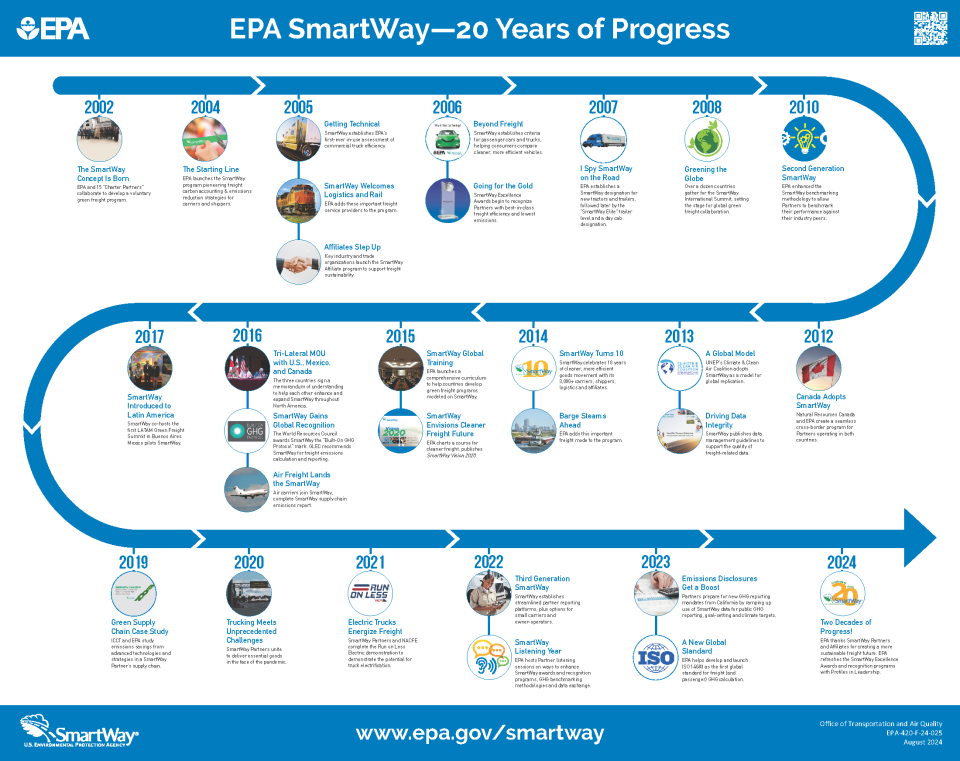SmartWay Timeline

- Over 50 Years of Efficiency Advancements in Transportation and Freight
- Infographic: EPA SmartWay - 20 Years of Progress
Over 50 Years of Efficiency Advancements in Transportation and Freight
As EPA celebrates over 50 years of environmental progress and the 20th anniversary of the SmartWay program, we look back at the progress the transportation and freight sectors have made to reduce emissions – and keep the economy rolling. Since the enactment of the 1970 Clean Air Act, virtually all vehicles manufactured today, including cars, pickup trucks, heavy-duty trucks and buses, are roughly 99 percent cleaner, while Gross Domestic Product has continued to grow.
Through a range of complementary efforts like its regulatory programs and SmartWay, EPA expects that the efficiency and environmental performance of trucks and the entire freight industry will continue to advance well into the next decade. For now, here’s a look at how far we’ve come!

When EPA was created, its focus in the early 1970s was to reduce emissions from passenger vehicles, which represented the majority of vehicles on the road - just as they do today. EPA acted swiftly to reduce pollution from automobiles, setting rigorous emissions standards that led to the introduction of the catalytic converter and initiating the phase-out of leaded gasoline.
Standards to curb emissions from medium and heavy-duty trucks, which are mostly powered by diesel fuel, also have been key to achieving major air quality improvements. NOx standards for trucks and buses were set in the early 1980s, followed in the 1990s by stricter limits on the sulfur content in diesel, resulting in significant environmental and public health benefits.
Throughout the 2000s, trucks got even cleaner and more fuel-efficient. EPA launched SmartWay in 2004, as a public-private partnership with the trucking sector and shippers to reduce fuel use and emissions by improving freight efficiency . New, stringent particulate matter and NOx standards were issued for heavy-duty engines, in 2007. These efforts were followed by EPA and DOT collaboration on a series of comprehensive greenhouse gas and fuel efficiency standards for heavy-duty trucks.
While more stringent emissions standards were designed to ensure new trucks are increasingly cleaner as they enter the marketplace, SmartWay’s primary focus is designed to help improve efficiency and reduce emissions from the existing legacy fleet of vehicles that often run for decades and millions of miles. The SmartWay program grew and evolved over the last 20 years to support the freight sector’s sustainability efforts. A roadmap of this journey is represented in this visual infographic.
Infographic: EPA SmartWay—20 Years of Progress

